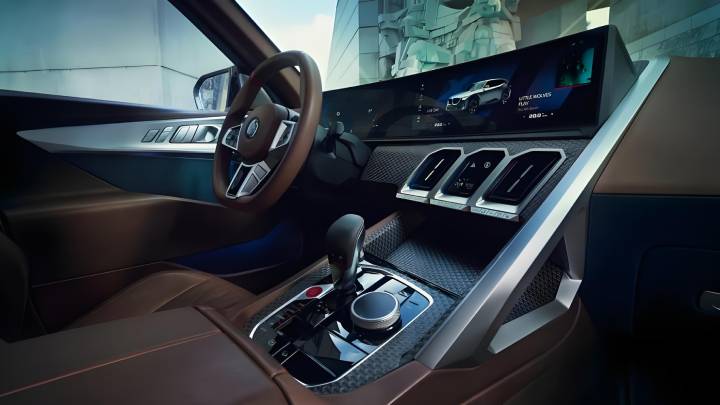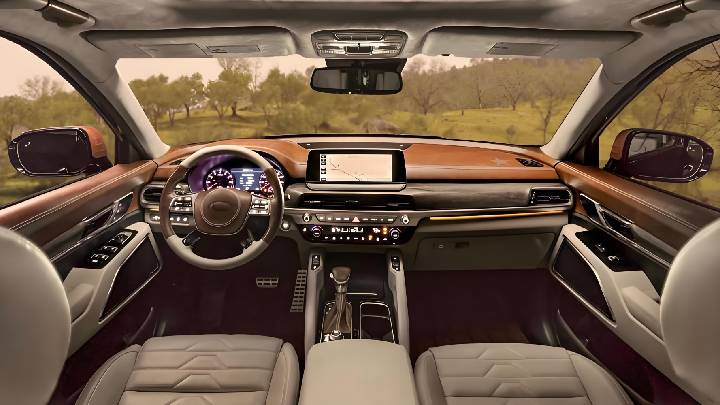The driving experience is profoundly influenced by the interior of a vehicle, with materials playing a critical role in shaping comfort, aesthetics, and functionality. As automotive technology advances, so do the materials used in vehicle interiors, aiming to enhance both the driver’s and passengers’ experiences. This article delves into the impact of automotive interior trim materials on driving experience, exploring various aspects such as comfort, safety, aesthetics, and sustainability.
The Importance of Interior Materials in Driving Experience
The choice of interior materials is not just about aesthetics; it significantly affects comfort, ergonomics, and the overall satisfaction of the driver and passengers. High-quality materials can transform a mundane drive into a luxurious journey, while poor choices can lead to discomfort and dissatisfaction.
Comfort and Ergonomics
Comfort is paramount in automotive design, especially for long drives. Materials used in seats, dashboards, and other touchpoints must provide the right balance of softness and support. Ergonomic design, paired with high-quality materials, ensures that seats conform to the body’s contours, reducing fatigue and enhancing comfort.
Seats: High-quality leather or advanced synthetic materials offer better support and cushioning. Memory foam seats that adapt to the shape of the occupant’s body can significantly improve comfort.
Dashboards and Touchpoints: Soft-touch materials on the dashboard and door panels add to the tactile experience, making the interior feel more inviting.
Aesthetic Appeal and Quality Perception
The look and feel of interior materials contribute to the perceived quality of the vehicle. Premium materials like genuine leather, natural wood trims, and brushed metal accents convey luxury and sophistication.
Luxury Finishes: High-end vehicles often feature materials such as Nappa leather and open-pore wood, which enhance the sense of luxury and craftsmanship.
Color and Texture: The choice of colors and textures plays a significant role in creating a pleasing and cohesive interior design. Contrasting stitching, for instance, can add a touch of elegance and attention to detail.
Sound Insulation and Noise Reduction
Interior materials also impact the acoustic environment within the vehicle. Proper insulation materials can reduce road noise, making the cabin quieter and more serene.
Acoustic Glass: Specialized glass can minimize outside noise, contributing to a quieter cabin.
Sound-Absorbing Materials: High-density foams and carpets can absorb sound, reducing the transmission of road and engine noise into the cabin.
Safety and Functional Aspects
Safety is a crucial consideration in the design of automotive interiors. The materials used must not only be aesthetically pleasing but also contribute to the safety of the occupants.
Fire Resistance
Materials used in automotive interiors must comply with safety standards regarding flammability. Fire-resistant materials can prevent or slow the spread of fire, providing valuable time for occupants to escape in the event of an accident.
Impact Absorption
In the event of a collision, interior materials play a role in absorbing impact and reducing injuries. Soft-touch materials and energy-absorbing components can mitigate the force of impact.
Air Quality
The materials used in the interior can affect the air quality within the vehicle. Low-VOC (volatile organic compounds) materials ensure that harmful emissions are minimized, providing a healthier environment for occupants.
Innovations and Trends in Interior Materials
The automotive industry is constantly evolving, with new materials and technologies being developed to enhance the driving experience.
Sustainable and Eco-Friendly Materials
There is a growing trend towards the use of sustainable materials in automotive interiors. These materials reduce the environmental impact and appeal to eco-conscious consumers.
Recycled Materials: Recycled plastics, fabrics, and even leather are being used to create eco-friendly interiors.
Natural Fibers: Materials such as bamboo, wool, and hemp are being incorporated into interiors for their sustainability and unique aesthetic appeal.
Smart Materials
Smart materials that respond to environmental conditions are being integrated into vehicle interiors. These materials can change properties based on temperature, light, or touch.
Thermochromic Materials: These materials change color with temperature changes, providing a dynamic aesthetic element.
Electroluminescent Materials: Used for ambient lighting, these materials can change color and intensity, enhancing the interior ambiance.
Advanced Synthetic Materials
Advances in synthetic materials have led to alternatives that mimic the look and feel of natural materials, offering durability and ease of maintenance.
Synthetic Leathers: These materials provide the luxury of leather without the maintenance issues, and they are often more durable.
High-Performance Fabrics: These fabrics offer resistance to stains, UV rays, and wear, making them ideal for high-traffic areas.
The Future of Automotive Interior Materials
The future of automotive interiors is geared towards creating more personalized, sustainable, and high-tech environments. As autonomous vehicles become more prevalent, the focus will shift from driver-centric to passenger-centric design, emphasizing comfort and functionality.
Personalization and Customization
Future interiors will offer greater levels of personalization, allowing occupants to customize colors, materials, and configurations to suit their preferences.
Modular Interiors: Components that can be easily swapped or reconfigured will allow for more flexibility in design and function.
Digital Customization: Advanced software will enable users to design their interiors digitally before purchasing, ensuring a tailor-made experience.
Integration of Technology
The integration of advanced technologies such as augmented reality displays, touch-sensitive surfaces, and AI-driven assistants will redefine the driving experience.
Interactive Surfaces: Touch-sensitive panels integrated into the dashboard and doors will provide intuitive control over various functions.
AI Assistants: These systems will offer personalized assistance, adjusting settings based on individual preferences and driving habits.
Sustainability
The push for sustainability will continue to drive innovation in materials, with a focus on reducing environmental impact and enhancing recyclability.
Biodegradable Materials: Research into biodegradable materials will lead to interiors that have minimal environmental impact at the end of their lifecycle.
Energy-Efficient Production: The production processes for interior materials will become more energy-efficient, further reducing the carbon footprint of vehicles.
Conclusion
The materials used in automotive interiors have a profound impact on the driving experience, influencing comfort, aesthetics, safety, and sustainability. As the automotive industry continues to innovate, the focus on high-quality, sustainable, and technologically advanced materials will ensure that future vehicles offer an enhanced driving experience. Whether through luxurious finishes, advanced sound insulation, or eco-friendly choices, the evolution of interior materials is set to redefine the way we perceive and enjoy our time on the road. For consumers, understanding these aspects can help in making informed decisions that enhance both the enjoyment and value of their vehicles.
Post time: Aug-07-2024





